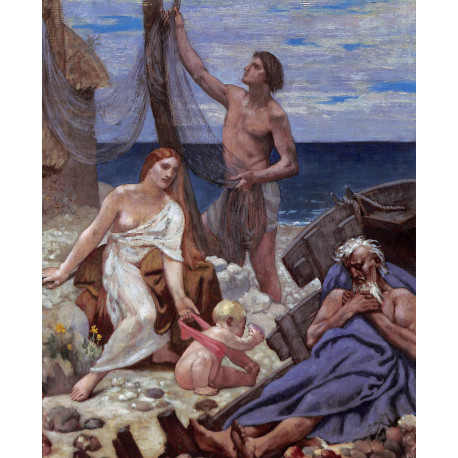Aucun produit
Par artiste
- Peinture
- Photographie
- Sculpture
- Art contemporain
- Mobilier
- Architecture et Agencement
- Céramique
- Verre
- Bijouterie / Orfèvrerie / Argenterie
- Horlogerie
- Mode et textiles
- Patrimoine / Civilisations
- Collections
- Ouvrages techniques
- Catalogues raisonnés
- Catalogues expositions
- Essais / correspondances / manifestes
- Arts religieux

Frais de port
à 0,01 €
pour la France
à partir de 50€ d’achats
Pierre Puvis De Chavannes - Catalogue raisonné (en anglais 2 volumes)
9780300115710
Disponible
En stock
Informations complémentaires
| Année de parution | 2010 |
| Nombre de pages | 745 |
| Format | 25 x 30 cm |
| Photos | Oui |
| dont couleurs | Oui |
| Reliure | Reliés sous coffret illustré |
| Langue | Anglais |
| ISBN | 9780300115710 |
| Editeur | Yale |
En savoir plus
Ce précurseur du symbolisme est un peintre trop peu connu, cet ouvrage en deux volumes nous permet d'appréhender la grandeur de son œuvre.
Ouvrage en anglais, textes assez pointus. Magnifique ouvrage, slipcase illustré qui le rend très élégant.
Ouvrage d'occasion en parfait état.
---
Understanding Puvis de Chavannes (1824-1898) is crucial to reading the history of art of the late nineteenth century and the development of modernism.
Internationally heralded yet sometimes scorned, much exhibited, respected and emulated, an artist's artist of pivotal importance to the generation of post-Impressionists from Seurat and Gauguin to Matisse and Picasso, Puvis's work is not readily categorized.
Often associated with classicizing imagery, he was an artist of great range, originality and radically idiosyncratic invention. He executed great mural complexes, compelling easel paintings and numerous works on paper that included lyrical watercolours, pastels and fierce caricatures.
Presented in two complementary volumes - a critical study of the artists life and art and a catalogue raisonné of his painted work - this book introduces many of his works for the first time, assesses his contribution and restores him to the pantheon of modern masters.
Volume I situates Puvis and his work in his time. With a wealth of new documentation, unpublished correspondence and images, Aimée Brown Price addresses the theories, forces and events that impinged on his art, as well as examining the work of his progenitors, contemporaries and followers. She contextualizes his themes, the development of his special decorative aesthetic and its importance in establishing a new kind of imagery and his modernized allegorical figures; and she discusses such topics as his atelier and teaching, the marketing of his work and his role in the art establishment of the 1890s.
Volume II is a complete compendium of Puvis's easel paintings and mural cycles for civic buildings throughout France as well as the for Boston Public Library. Each work is analysed in terms of its genesis, distinct iconography, and style. A revised dating of the several versions of some of Puvis's best-known paintings indicates heretofore unrecognized late reprisals and offers a new index to the evolution of his style.








